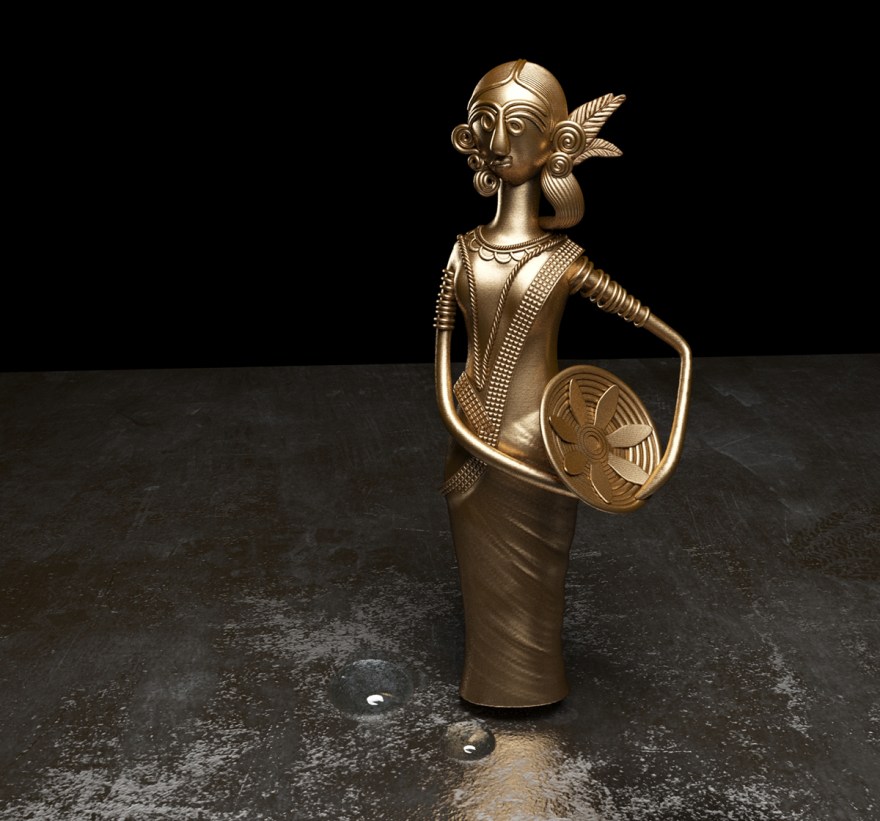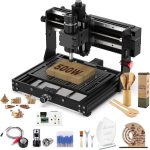Unlock The Artistry Of Metal Work 3D: Experience The Next Dimension In Craftsmanship
Metal Work 3D: Revolutionizing the World of Art and Design
Have you ever wondered what it would be like to turn your creative ideas into tangible and intricate metal sculptures? With the advent of 3D metal printing technology, this dream has become a reality. Metal work 3D is a groundbreaking process that allows artists, designers, and manufacturers to bring their imagination to life in a way that was previously unimaginable. In this article, we will delve into the fascinating world of metal work 3D, exploring its various aspects, benefits, and potential applications.
What is Metal Work 3D?
Metal work 3D, also known as metal additive manufacturing, is a process that utilizes 3D printing technology to create intricate metal objects. Unlike traditional methods of manufacturing, which involve subtractive processes like cutting and drilling, metal work 3D builds objects layer by layer using powdered metal or metal wire. This innovative technique offers unprecedented design freedom and allows for the creation of complex geometries that were previously unattainable.
2 Picture Gallery: Unlock The Artistry Of Metal Work 3D: Experience The Next Dimension In Craftsmanship


Who Can Benefit from Metal Work 3D?
Metal work 3D has immense applications across various industries. Artists and designers can now bring their wildest ideas to life, creating metal sculptures and jewelry with intricate details and unique shapes. Manufacturers can use metal work 3D to produce highly customized parts and components for industries such as aerospace, automotive, and healthcare. Researchers and engineers can leverage this technology to prototype and test new innovations quickly and cost-effectively.
When and Where Did Metal Work 3D Originate?

Image Source: behance.net
The origins of metal work 3D can be traced back to the early 1980s when Charles Hull invented stereolithography, the process that laid the foundation for modern 3D printing. Over the years, advancements in technology and materials paved the way for metal work 3D. Today, this cutting-edge technique is being used in numerous industries worldwide, revolutionizing the manufacturing landscape.
Why Choose Metal Work 3D?
Metal work 3D offers a plethora of advantages over traditional manufacturing methods. Firstly, it allows for intricate and complex designs that would be impossible to achieve through conventional means. Additionally, it reduces material waste since the metal is only used where it is needed, resulting in cost savings and environmental benefits. Metal work 3D also enables rapid prototyping, reducing the time it takes to bring a product from concept to market. Moreover, it offers greater design freedom and customization options, allowing for highly personalized creations.
How Does Metal Work 3D Work?
The process of metal work 3D involves several steps. It begins with a 3D model created using computer-aided design (CAD) software. The model is then sliced into thin layers, and the 3D printer uses these layers as a blueprint to build the object layer by layer. In the case of metal work 3D, a laser or electron beam is used to melt and fuse the metal particles, creating a solid structure. Once the printing is complete, the object is removed from the printer and undergoes post-processing, which may include heat treatment, polishing, and finishing touches.
Frequently Asked Questions (FAQ) about Metal Work 3D

Image Source: media-amazon.com
Q: What types of metals can be used in metal work 3D?
A: Metal work 3D can be carried out using a wide range of metals, including stainless steel, titanium, aluminum, copper, and nickel alloys.
Q: What is the maximum size that can be printed using metal work 3D?
A: The size of the object that can be printed depends on the capabilities of the 3D printer. However, with advancements in technology, larger metal objects can now be produced.
Q: Are there any specific design requirements for metal work 3D?
A: While metal work 3D allows for intricate designs and complex geometries, it is important to consider factors such as support structures, thermal stresses, and material properties during the design process.
Metal Work 3D: Pros and Cons
Like any other technology, metal work 3D has its own set of advantages and disadvantages. Some of the pros include:
Design Freedom: Metal work 3D allows for unprecedented design freedom, enabling the creation of intricate and complex structures.
Cost and Time Savings: Metal work 3D reduces material waste and eliminates the need for costly tooling, resulting in significant cost and time savings.
Customization: This technology offers unparalleled customization options, allowing for the creation of highly personalized products.
However, there are a few drawbacks to consider:
High Initial Investment: The equipment and materials required for metal work 3D can be expensive, making it less accessible for smaller businesses and individuals.
Post-Processing Requirements: Objects printed using metal work 3D often require post-processing, which can be time-consuming and labor-intensive.
Conclusion
Metal work 3D has revolutionized the world of art, design, and manufacturing. This groundbreaking technology offers unparalleled design freedom, customization options, and cost savings. Whether you’re an artist looking to create intricate metal sculptures or a manufacturer in need of highly customized parts, metal work 3D is a game-changer. While it does come with its own set of challenges, the benefits far outweigh the drawbacks. With continued advancements in technology, metal work 3D is poised to reshape industries and unlock new possibilities in the world of creativity and innovation.
This post topic: Metalworking


